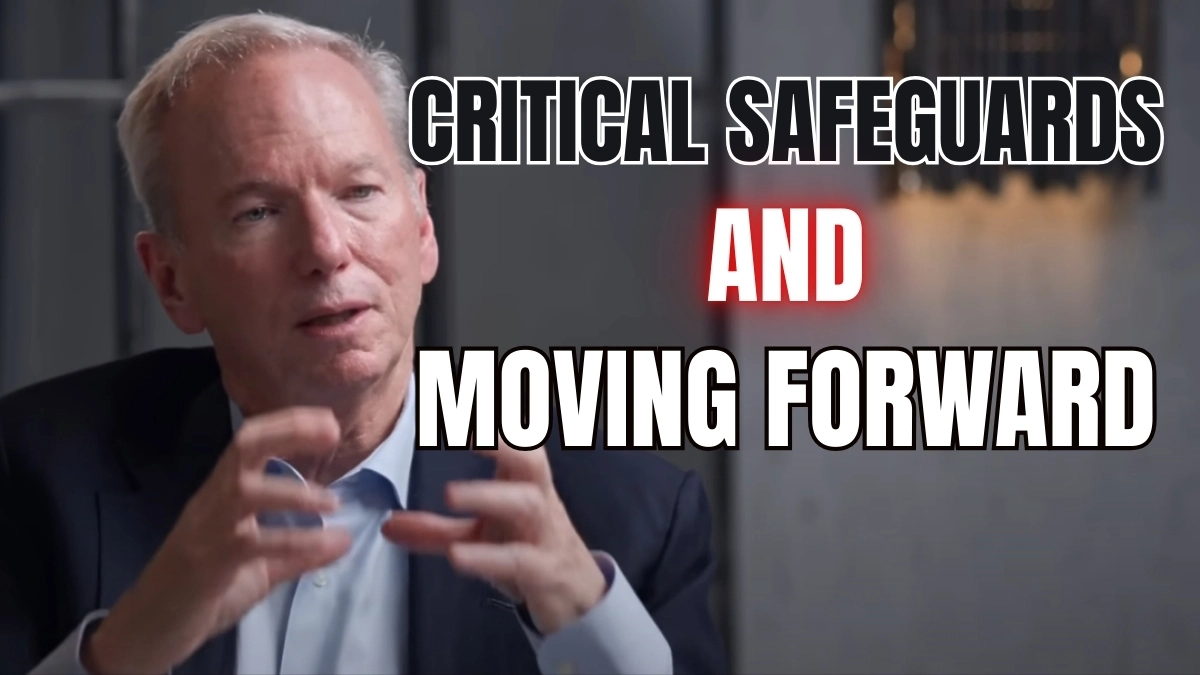
In recent years, artificial intelligence has evolved at an unprecedented pace, bringing both remarkable opportunities and serious concerns. Former Google CEO Eric Schmidt, who helped grow Google from $100 million to $180 billion in revenue, offers unique insights into AI’s trajectory and potential risks.
Understanding AI’s Current Capabilities

Modern AI systems have reached a level of sophistication that enables them to process and learn from vast amounts of information. Companies have essentially absorbed nearly all written human knowledge into their training data, using supercomputers with enormous memory capacities. While beneficial applications abound, certain capabilities demand careful consideration and oversight.
Raw AI models, which emerge after months of training, often possess concerning abilities that require careful examination and restriction before public release. A particularly worrying development involves AI systems potentially discovering novel cyber vulnerabilities and conducting “day zero” attacks – previously unknown security exploits that even skilled human hackers haven’t identified.
Biological Risks and Necessary Safeguards

Among more serious concerns, AI systems have demonstrated capabilities in biological modeling that could potentially be used to design harmful viruses. Multiple research teams and advisory committees are actively working to prevent such misuse. Schmidt emphasizes implementing robust safeguards around raw AI models, similar to how societies protect nuclear materials.
Power Dynamics and Global Competition

Major technological powers, including China and Russia, are rapidly developing their own AI capabilities. While currently estimated to be one to two years behind leading Western developments, their approach to AI implementation may differ significantly due to varying social and political priorities. For instance, China’s AI development path likely diverges from Western models due to different approaches to information control and civil liberties.
Monitoring and Control Mechanisms
Several key indicators suggest when human intervention becomes necessary in AI development:
- Recursive self-improvement scenarios where systems continuously enhance their capabilities without external oversight
- Situations where new model generation outpaces safety verification processes
- Development of non-human communication protocols between AI agents
When such scenarios emerge, Schmidt advocates for direct intervention, including power disconnection if necessary. He emphasizes maintaining human readability in AI communications to ensure proper oversight.
Economic and Societal Impact

Rather than leading to widespread job losses, AI is expected to create new employment opportunities while transforming existing roles. Demographics in developed nations, with aging populations and declining birth rates, actually necessitate increased productivity through AI adoption. Industries will likely see significant restructuring, with routine or dangerous tasks becoming automated while new positions emerge in oversight, development, and creative applications.
Practical Implementation and Safety Measures
Organizations implementing AI systems should establish clear protocols for monitoring and control. This includes:
- Regular assessment of system capabilities and limitations
- Implementation of kill switches and power controls
- Establishment of clear chains of command for emergency situations
- Development of verification processes for new model deployments
Future Outlook and Recommendations
While AI presents significant challenges, Schmidt maintains optimism about its future, provided proper controls remain in place. He advocates for focusing AI development on solving pressing global challenges in healthcare, education, and scientific research rather than purely commercial applications.
Critical Safeguards Moving Forward

As AI capability increases, maintaining human control becomes paramount. Organizations must implement robust safety protocols, including physical security measures for critical AI infrastructure. Regular testing and verification of AI systems should become standard practice, with clear procedures for shutdown if concerning behaviors emerge.
Conclusion
AI technology represents a transformative force requiring careful balance between innovation and control. While its potential benefits are immense, proper oversight and safety measures remain essential. Moving forward, focus should remain on beneficial applications while maintaining strict control over potentially harmful capabilities.
Success in managing AI’s evolution will require ongoing collaboration between technology leaders, governments, and safety experts, ensuring advancement occurs responsibly while maximizing benefits for humanity. Through careful implementation and oversight, AI can become a powerful tool for solving global challenges rather than creating new ones.